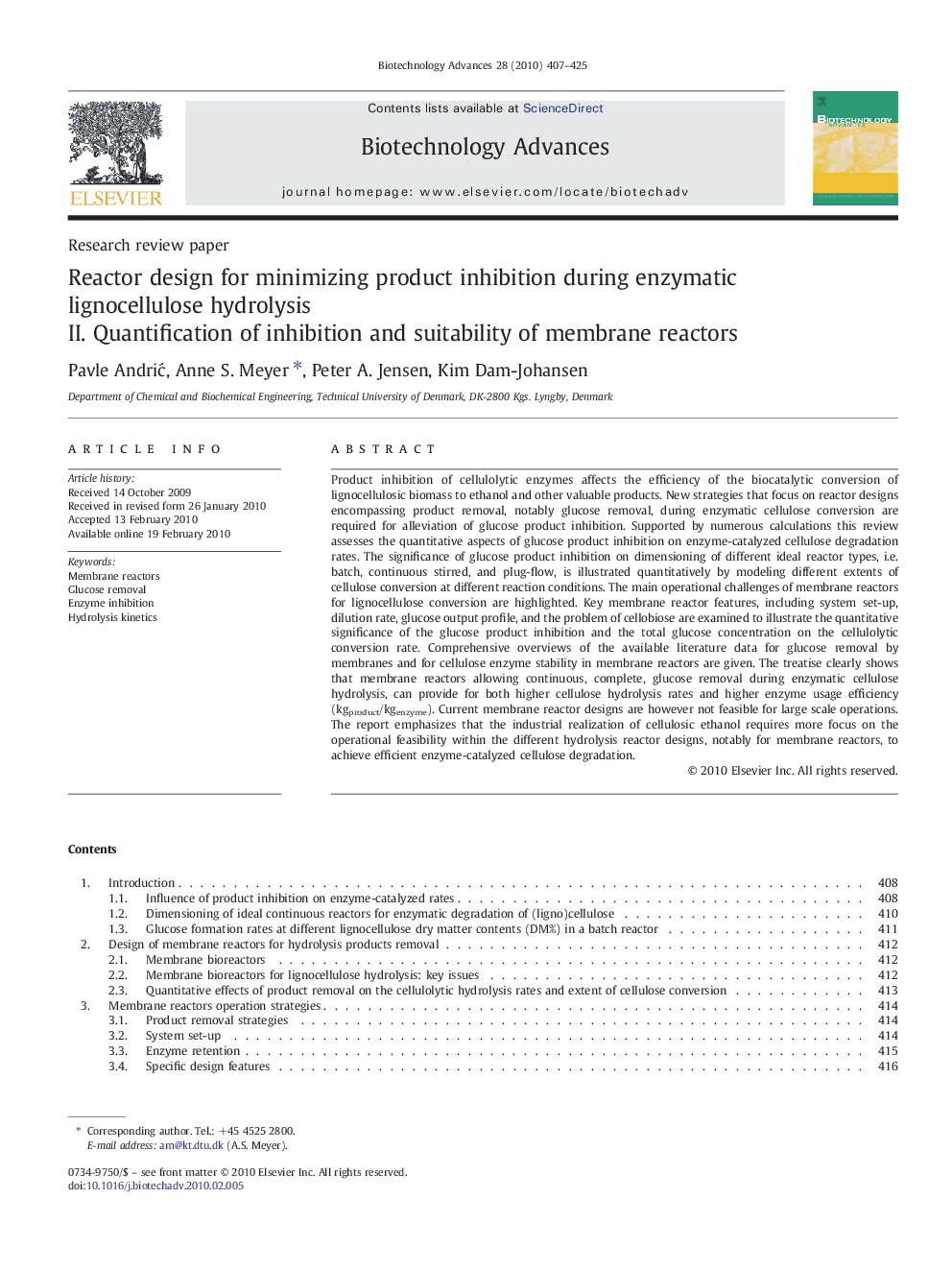| کد مقاله | کد نشریه | سال انتشار | مقاله انگلیسی | نسخه تمام متن |
|---|---|---|---|---|
| 14711 | 1241 | 2010 | 19 صفحه PDF | دانلود رایگان |

Product inhibition of cellulolytic enzymes affects the efficiency of the biocatalytic conversion of lignocellulosic biomass to ethanol and other valuable products. New strategies that focus on reactor designs encompassing product removal, notably glucose removal, during enzymatic cellulose conversion are required for alleviation of glucose product inhibition. Supported by numerous calculations this review assesses the quantitative aspects of glucose product inhibition on enzyme-catalyzed cellulose degradation rates. The significance of glucose product inhibition on dimensioning of different ideal reactor types, i.e. batch, continuous stirred, and plug-flow, is illustrated quantitatively by modeling different extents of cellulose conversion at different reaction conditions. The main operational challenges of membrane reactors for lignocellulose conversion are highlighted. Key membrane reactor features, including system set-up, dilution rate, glucose output profile, and the problem of cellobiose are examined to illustrate the quantitative significance of the glucose product inhibition and the total glucose concentration on the cellulolytic conversion rate. Comprehensive overviews of the available literature data for glucose removal by membranes and for cellulose enzyme stability in membrane reactors are given. The treatise clearly shows that membrane reactors allowing continuous, complete, glucose removal during enzymatic cellulose hydrolysis, can provide for both higher cellulose hydrolysis rates and higher enzyme usage efficiency (kgproduct/kgenzyme). Current membrane reactor designs are however not feasible for large scale operations. The report emphasizes that the industrial realization of cellulosic ethanol requires more focus on the operational feasibility within the different hydrolysis reactor designs, notably for membrane reactors, to achieve efficient enzyme-catalyzed cellulose degradation.
Journal: Biotechnology Advances - Volume 28, Issue 3, May–June 2010, Pages 407–425